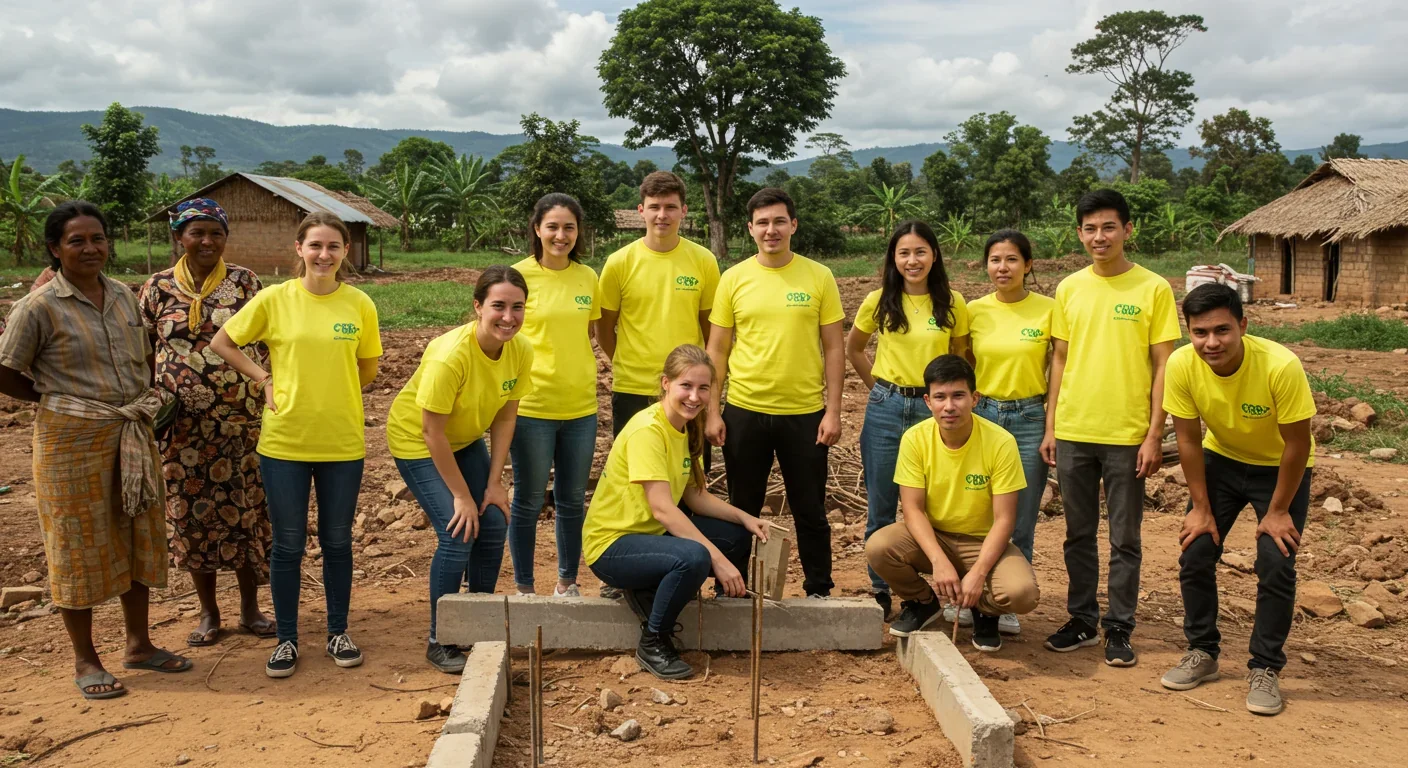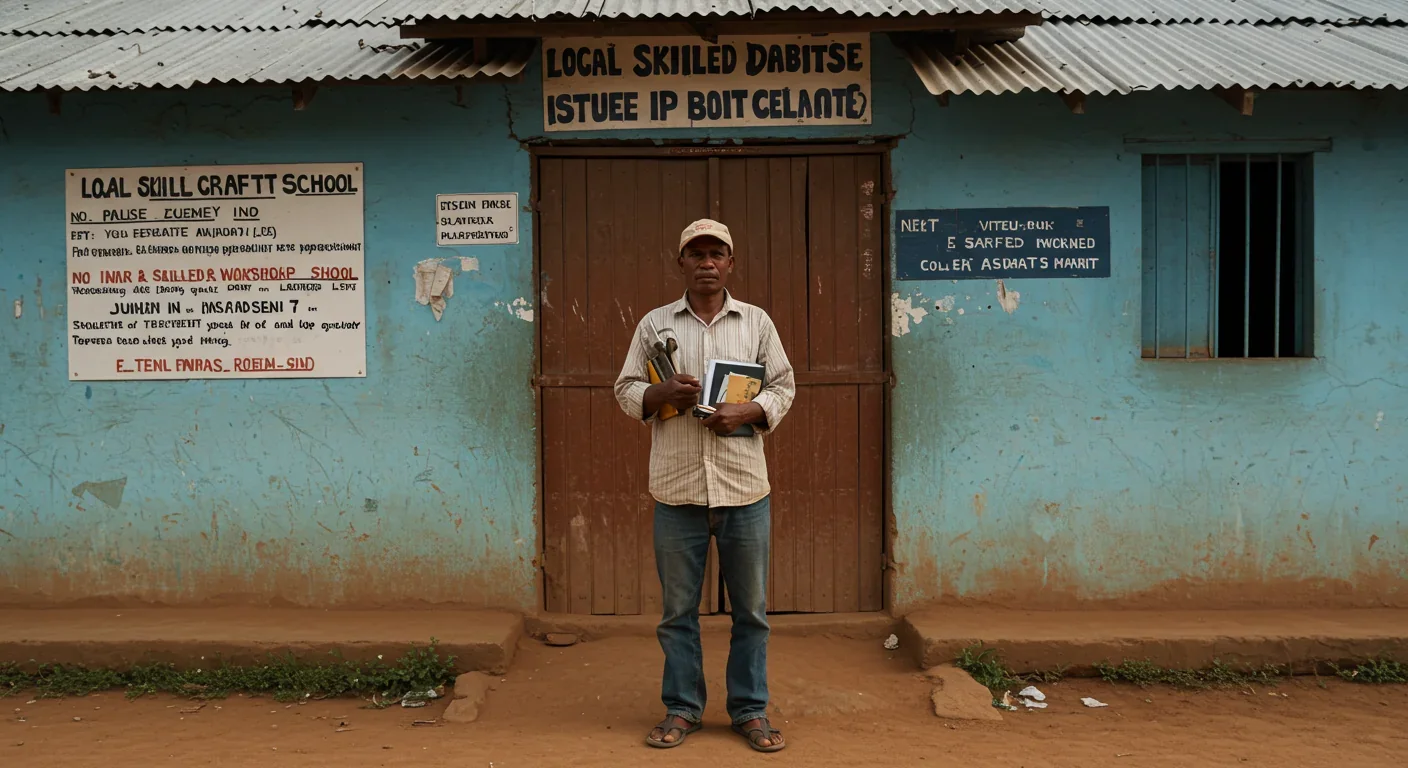Crypto in Authoritarian States: Freedom or Evasion Tool?

TL;DR: The $2 billion voluntourism industry often harms the communities it claims to help through economic exploitation, cultural appropriation, and even child abuse. Ethical alternatives prioritize community-led development and local ownership.

By 2030, the voluntourism industry will have ballooned past $1.2 billion. That's a lot of good intentions. But here's the uncomfortable truth nobody wants to discuss over post-trip lattes: many of those well-meaning charity trips are actually making things worse. Much worse.
The Instagram posts look beautiful. Young volunteers painting schoolhouse walls in Tanzania, cuddling orphans in Cambodia, building wells in Guatemala. Feel-good snapshots of global citizenship. But behind those filtered images lies a troubling reality that researchers, local communities, and development experts have been warning about for years.
Voluntourism has exploded from a niche activity into a massive global enterprise. Today, more than 1.6 million people participate annually, spending roughly $2 billion on trips that promise to change the world. The numbers tell a different story about who's really changing.
According to Grand View Research, the market reached $848.9 million in 2023 and is projected to hit $1,273.3 million by 2030. That's a compound annual growth rate of 6.1 percent. Young travelers aged 18-34 make up roughly 41 percent of participants, driven by social media aesthetics and résumé-building opportunities as much as genuine altruism.
But where's all that money going? Not where you'd think.
Here's where it gets uncomfortable. Those charity trips often displace the exact people they claim to help.
Take Pippa Biddle's account from Tanzania. She and her private boarding school classmates spent weeks building a schoolhouse. Every night, local men had to tear down the structurally unsound bricks the students laid and rebuild everything properly. The volunteers were so unskilled that they created more work, not less.
The locals could have been paid to do the job right the first time. Instead, they worked double shifts—entertaining unskilled foreigners during the day, then fixing their mistakes after dark. This isn't an isolated incident. It's a pattern.
Research shows that short-term volunteers routinely displace local employment, disrupting economies and reinforcing stereotypes. When organizations market volunteer placements as "critical needs," they justify bringing in low-skill, short-term workers who undercut local wages or replace paid staff entirely.
The economics are perverse. Voluntourism programs are increasingly run by for-profit companies rather than charities. These businesses prioritize the volunteer experience over community benefit, because satisfied customers leave five-star reviews and recruit their friends. The business model depends on making volunteers feel heroic, not on creating sustainable change.

Economic harm is only part of the story. Voluntourism often reproduces what researchers politely call "neocolonial practices"—the modern version of white saviorism.
Yi Wang's research in Mathare, Kenya illustrates how voluntourism sidelines local voices and histories, prioritizing volunteers' experiences over community needs. Programs frame poverty through exploitative narratives that reinforce dependency rather than acknowledge local agency and resilience.
This creates what scholars call the "voluntourism paradox"—it promises aid but undercuts local autonomy. Communities become stages for volunteers to perform charity, rather than partners in genuine development.
Cultural appropriation runs rampant. Volunteers lacking proper cultural training inadvertently disrespect local customs, commodify sacred traditions, and perpetuate power imbalances. The mindset treats communities as objects of pity rather than equals with valuable expertise.
The worst cases go beyond economic and cultural harm into outright exploitation.
ECPAT International has documented how voluntourism and orphanage tourism create avenues for offenders to access and exploit children. Some facilities actually incentivize keeping children in institutions—or even separating children from families—because orphans attract volunteer dollars.
A Cambodian investigation found that as orphanage tourism grew, so did the number of orphanages, even as the actual number of orphans declined. Children with living parents were placed in institutions to satisfy volunteer demand for "authentic" poverty experiences.
This isn't charity. It's a business model that profits from manufactured suffering.
Sexual exploitation in travel and tourism affects children worldwide, and no destination is immune. Voluntourism provides cover for predators by normalizing unsupervised contact with vulnerable children. The consequences are devastating and permanent.
So what's the alternative? How do we distinguish genuine development from exploitative tourism?
The answer lies in who holds power.
Community-led development differs fundamentally from externally-driven programs. In true community-led initiatives, local people identify their own goals, develop implementation plans, and maintain control over decision-making. External partners support rather than direct.
Consider the contrast: When you stay with community-based tourism operators, the majority of your payment goes directly to host families and guides. A percentage flows into village development funds where the entire community votes on how money gets spent—whether on eco-friendly infrastructure, school upgrades, or water security.
These models ensure tourism revenue stays within communities, empowers local women, preserves cultural integrity, and supports environmental resilience. They create alternate employment opportunities that strengthen climate resilience rather than displacing existing livelihoods.
Global Brigades offers another example. This nonprofit takes a holistic approach to supporting communities in achieving health and economic objectives. Their model emphasizes local ownership and collaborative program implementation, with the explicit goal of transitioning to sustainable community-led initiatives.
Habitat for Humanity revamped its Global Village program during COVID to focus more on local needs and avoid the charity mindset. Projects are now designed by local communities, with local leaders identified to lead initiatives. The goal is supporting existing community projects rather than imposing external visions.
The difference is stark. Community-led initiatives build sustainable solutions because decisions are made by those directly affected. Local ownership leads to better outcomes because communities understand their own needs far better than outsiders ever could.

Not all voluntourism is created equal. Here's how to evaluate whether a program is ethical or exploitative.
Major red flags:
Programs run by foreigners with no local leadership. Placements working directly with orphans or vulnerable children. No vetting process for volunteers, anyone can join. Marketing that emphasizes your experience over community benefit. Short-term trips, less than 3-6 months, for skilled work. No clear connection to long-term community development plans. Organizations that refuse to share impact data or financial transparency. Programs where volunteers pay thousands but communities receive little. Emphasis on "saving" or "helping" rather than partnership and solidarity.
Positive indicators:
Activities defined and led by local community members. Qualified, vetted volunteers only accepted for relevant skills. Strict safeguarding and safety policies. Long-term commitment to specific communities. Clear mechanisms for local accountability. Transparent financial reporting showing community benefit. Focus on capacity-building and skill transfer. Collaboration with established local organizations.
If you're committed to making a positive impact, here's how to do it right.
For travelers:
Research extensively before committing. Look for organizations that collaborate with local communities and address genuine needs rather than focusing on volunteer experience. Avoid pay-to-play activities like short-term orphanage visits or wildlife interactions that may harm animals.
Connect with local tourism boards or visitor centers to learn about community-approved volunteer opportunities. Partnership with local authorities helps ensure programs align with regional needs and reduces exploitation risk.
Be honest about your skills. If you wouldn't be hired to do that job in your home country, you probably shouldn't be doing it abroad. Construction, teaching, healthcare—these require expertise. Unskilled volunteers often create more problems than they solve.
Consider whether your time and money would create more impact if donated directly to local organizations. Sometimes the best thing you can do is stay home and send money instead.
For organizations:
Changes to marketing practices must move away from exploitative narratives on poverty. Stop using images of sad children to attract volunteers. Stop framing communities as helpless victims waiting to be saved.
Implement rigorous vetting processes. The Code of Conduct for the Protection of Children from Sexual Exploitation in Travel and Tourism provides a six-criteria framework that includes voluntourism policies and child protection standards.
Prioritize long-term relationships over short-term visits. Three-month minimum commitments allow volunteers to actually learn context and build meaningful relationships. Anything shorter is often tourism masquerading as service.
Build genuine partnerships with local organizations rather than parachuting in with predetermined solutions. Listen more than you talk. Follow rather than lead.
Ensure financial transparency. Communities and volunteers both deserve to know exactly where money goes and what impact it creates.
Current global ethics guidelines remain toothless. The Global Code of Ethics for Tourism and UNESCO's Media and Information Literacy Guidelines offer recommendations but lack binding enforcement.
Real change requires regulatory teeth. Countries should require voluntourism operators to register, demonstrate community partnerships, and prove tangible benefits. Tax structures could penalize exploitative models while incentivizing ethical practices.
Industry certification programs need strengthening. Fair Trade Tourism and similar initiatives should expand, creating clear standards that help consumers identify responsible operators. These certifications must include meaningful penalties for violations.
Educational institutions sending students abroad bear special responsibility. Universities and high schools should vet partner organizations rigorously, require pre-departure cultural competency training, and emphasize critical reflection over feel-good narratives.
Technology can help. Platforms that allow community members to review and rate volunteer programs would shift power toward local voices. Impact measurement tools that track long-term outcomes rather than volunteer satisfaction would refocus priorities.
The 862 million people who volunteer monthly worldwide represent extraordinary potential for positive change. But potential isn't the same as impact. The difference lies in who controls the narrative, who benefits economically, and whether power flows toward or away from communities.
The voluntourism industry won't fix itself. Market forces incentivize exploitation because satisfied volunteers generate revenue, while community benefit is harder to monetize.
Change starts with individual choices. Before booking that service trip, ask hard questions. Who designed this program? Where does the money go? What happens to this community when volunteers leave? How are you measuring impact beyond participant satisfaction?
Support community-led tourism initiatives directly. Platforms like Grassroutes Journeys in Maharashtra, the Bangrong Community in Phuket, and Spiti Ecosphere in Himachal Pradesh channel tourism revenue toward local communities while preserving culture and environment.
If you're already involved in voluntourism, whether as a traveler or organizer, commit to learning about power dynamics, neocolonialism, and sustainable development. Read critiques of your own work. Listen to community voices, especially when they're uncomfortable to hear.
Advocate for stronger regulations. Contact representatives and support legislation that would require transparency and accountability in international volunteer programs.
Most importantly, remember that meaningful change takes time, resources, and humility. The communities you want to "help" have survived for generations without you. They have expertise, agency, and solutions you haven't imagined.
Your role isn't to save anyone. It's to show up as a partner, follow local leadership, and recognize that sometimes the most ethical choice is simply to stay home and support from a distance.
The next time someone posts those glossy volunteer photos, ask what happened after the camera stopped clicking. Ask who benefited. Ask whether that trip created dependency or empowerment, displacement or opportunity.
The answer will tell you everything you need to know about the difference between charity tourism and genuine solidarity.

Saturn's iconic rings are temporary, likely formed within the past 100 million years and will vanish in 100-300 million years. NASA's Cassini mission revealed their hidden complexity, ongoing dynamics, and the mysteries that still puzzle scientists.

Scientists are revolutionizing gut health by identifying 'keystone' bacteria—crucial microbes that hold entire microbial ecosystems together. By engineering and reintroducing these missing bacterial linchpins, researchers can transform dysfunctional microbiomes into healthy ones, opening new treatments for diseases from IBS to depression.

Marine permaculture—cultivating kelp forests using wave-powered pumps and floating platforms—could sequester carbon 20 times faster than terrestrial forests while creating millions of jobs, feeding coastal communities, and restoring ocean ecosystems. Despite kelp's $500 billion in annual ecosystem services, fewer than 2% of global kelp forests have high-level protection, and over half have vanished in 50 years. Real-world projects in Japan, Chile, the U.S., and Europe demonstrate economic via...

Our attraction to impractical partners stems from evolutionary signals, attachment patterns formed in childhood, and modern status pressures. Understanding these forces helps us make conscious choices aligned with long-term happiness rather than hardwired instincts.

Crows and other corvids bring gifts to humans who feed them, revealing sophisticated social intelligence comparable to primates. This reciprocal exchange behavior demonstrates theory of mind, facial recognition, and long-term memory.

Cryptocurrency has become a revolutionary tool empowering dissidents in authoritarian states to bypass financial surveillance and asset freezes, while simultaneously enabling sanctioned regimes to evade international pressure through parallel financial systems.

Blockchain-based social networks like Bluesky, Mastodon, and Lens Protocol are growing rapidly, offering user data ownership and censorship resistance. While they won't immediately replace Facebook or Twitter, their 51% annual growth rate and new economic models could force Big Tech to fundamentally change how social media works.